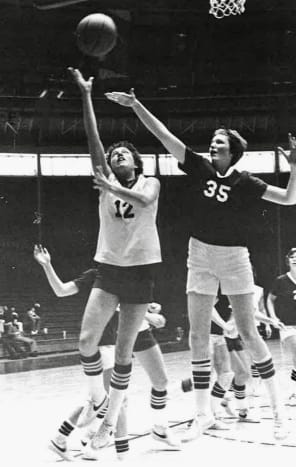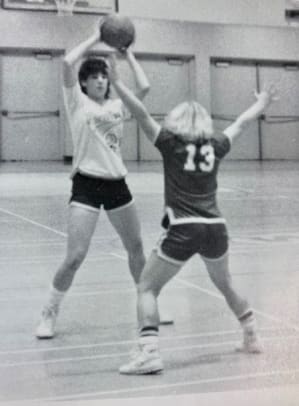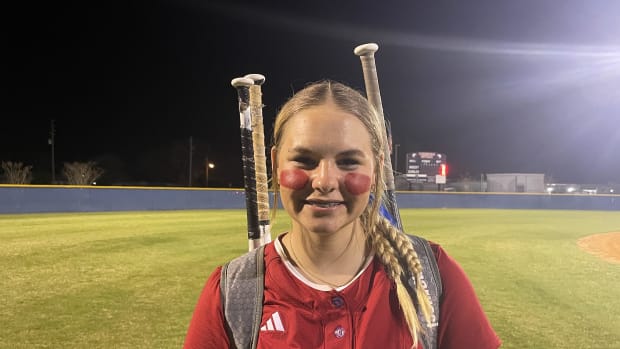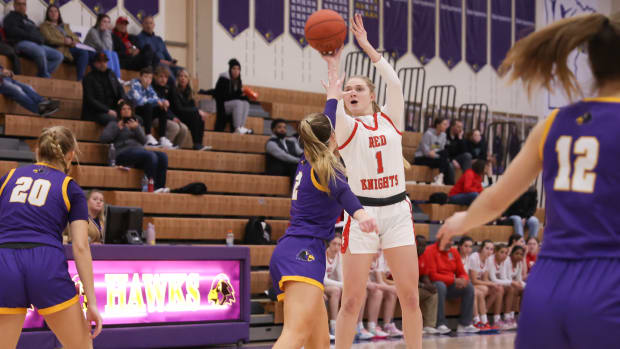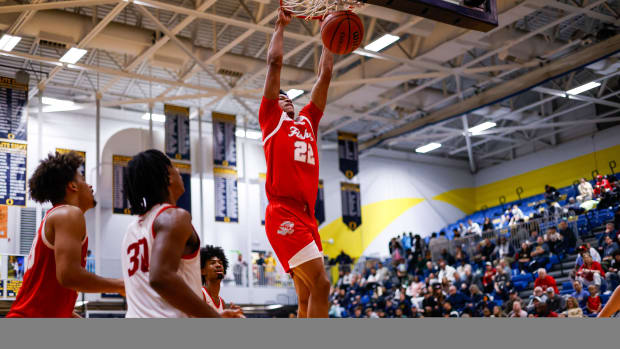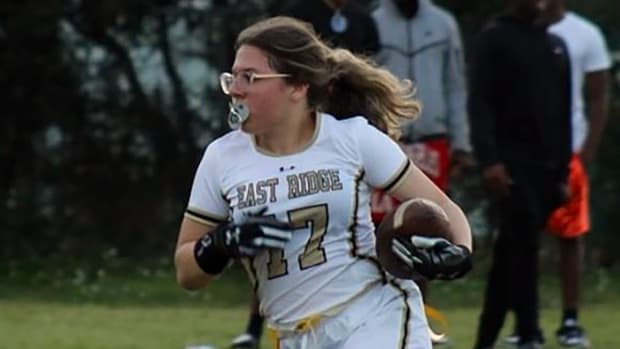Title IX at 50: On the law that shaped women's sports and the fight for equal opportunity
The irony is not lost on Cindy Adsit. She's made a career out of creating opportunities for women in sports, yet did not initially understand the total impact of the groundbreaking law that made it happen.
When Adsit was entering her senior year at Hardin High School, a small school in a smaller town in southeast Montana, high school girls sports were set to change.
It was 1972 and Title IX, the landmark education law that made sex-based discrimination illegal, was going into effect. The federal law required equal funding for women's and men's sports.
All it meant to Adsit was that her Hardin High School girls basketball team was going from playing 6-on-6, an archaic, female-specific version of the sport, to 5-on-5, to mirror the boys.
She joined her high school basketball teammates to protest the state athletic association to leave the sport unchanged — fighting against the very law that would go on to shape her career in athletics.
“We did not want to be compared to the boys,” Adsit said. “At that time, our team was better than the boys and we wanted to be considered a separate sport. Looking back on it, that was a pretty stupid way of looking at it.”
Over the ensuing decades, those now-famous 37 words in the law endured, evolving access to sports for girls and women, opening up scores of opportunities to play sports in high school and in college. In college, that meant equal scholarships and funding for men's and women's teams, the introduction of women's NCAA Tournaments and women's national championships.



Title IX's 50th birthday has attracted a wide swath of retrospective coverage from major national media outlets like ESPN, The New York Times and NPR.
It's given Adsit, an assistant executive director with the Washington Interscholastic Activities Association, plenty of time to reflect.
Adsit graduated and went on to play basketball and volleyball at Montana State (at the time, volleyball was not offered to Adsit as a high school sport, though her basketball coach would teach her and her teammates volleyball in the offseason).
She moved to Seattle after graduating and didn't hesitate to pursue work related to the advancement of women's sports. She became the executive director of the Northwest Sports Foundation, which carried the mission of promoting opportunities for girls and women's sports in the region — and also organized a girls basketball league.
Those opportunities opened the door leading to the Washington Interscholastic Activities Association hiring her in 1987. Today, she's the longest-tenured holder of her position in the nation.
Over the past year, that work has come full circle. She’s helped lead the WIAA’s efforts to assess the law’s wide-ranging impacts over five decades — both its achievements and shortcomings.
"Many sports were disregarded in the past," Adsit said. "And now, there are more and more attempts to make sports more inclusive for all kids."
Title IX — a broad-reaching follow-up to the Civil Rights Act of 1964 — required equal opportunity in sport for boys and girls alike, creating formative sports experiences for scores of young girls who previously may not have even seen certain sports — or sports at all — as an option.
The resulting growth of women's sports was, as Adsit describes, "exponential."
National Federation of High School State Associations executive director Dr. Karissa Niehoff said in an op-ed that in the more than a century of high school sports in the United States, “there is perhaps nothing more significant and transformative” than the law passing.
THE TITLE IX EFFECT:
As more girls teams began to pop up over the next several decades after the law's passing in 1972, one way to measure the growth of high school girls sports in Washington is to look at when enough schools played the sport for the WIAA to implement state playoffs. Here are the WIAA women's sports and the corresponding year of their first Washington state championship:
XC (1974), Golf (1989), Gymnastics (1969), Soccer (1982), Swim & Dive (1969), Tennis (1971), Track & Field (1969), Volleyball (1974), Wrestling (1907), Fastpitch Softball (1992), Slowpitch Softball (1978), Bowling (1905).
Title IX: No person in the United States shall, on the basis of sex, be excluded from participation in, be denied the benefits of, or be subjected to discrimination under any education program or activity receiving federal financial assistance.
Before Title IX, it was believed boy athletes outnumbered girl athletes 12.5 to 1.
But it took years for schools to grasp Title IX’s full impact, and its shortcomings are still being addressed. Many high schools and colleges still don’t provide girls sports enough opportunities to meet the federal law, according to a study by the University of Maryland around Title IX's 50th anniversary.
Data on nationwide compliance is incomplete and unreliable. It's difficult, and potentially impossible, to measure whether schools are abiding by the law unless an individual complaint is filed.
WIAA assistant executive director B.J. Kuntz was a three-sport standout (volleyball, basketball and track & field) at Wenatchee High School in the late 1980s and went on to be a two-time all-West Coast Conference volleyball player at Gonzaga.
During her formative sports years before high school, she remembers being involved in a lot of sports, but the options to play the sport that would eventually take her the furthest — volleyball — were limited.
"I definitely got to see things, but didn't really think I could do them at the time I went through my schooling experience," Kuntz said.
She grew up wanting to be an athletic director, struck by their wide-reaching involvement and impact in education-based athletics. But it was a male-dominated profession. She remembers in high school asking if women could even be athletic directors because she had seen so few.
After she was eventually hired in her first athletic director role, she remembers feeling out of place at conferences as one of the only, if not the only woman in the room. Her male athletic director colleagues were generous and nice, but it took her time to figure out where she fit in and belonged.
Since joining the WIAA in 2019 after 12 years as the Wenatchee School District AD, her ultimate focus has become being the woman leader and mentor for others she wishes she had when she was coming up in her career.
As she reflected on Title IX's impact on women leaders in education throughout the 2021-22 school year, she thinks about the representation.
"It's neat when you're in a room with women ADs, there are a handful of them who were playing sports when Title IX went into action and then there's several people that have really been benefactors of it," Kuntz said. "It's really neat to watch the group work together."
Kuntz and Adsit both feel the work is not done, though there's much to celebrate. In Washington state, Adsit points to the introduction of bowling as an example of a sport that draws a high percentage of first-time athletes.
"It's been tremendous for the girls in this state," Adsit said. "It reached out to an athlete, those kids generally don't participate in any other sport and it's been a great avenue for them."
The NFHS included in annual summer meetings in San Antonio, Texas at the end of June a series of speeches from education-based athletic leadership positions around the country
Throughout the 2021-22 school year, the WIAA highlighted a woman in sports each week for its Title IX Tuesday series. A monthly zoom meeting for women in sports leadership across the country also took place as a way for women to network.
"We're not there yet," Adsit said. "We need to keep striving and keep looking creatively at ways to continue for things to evolve."
--Andy Buhler; @AndyBuhler.
